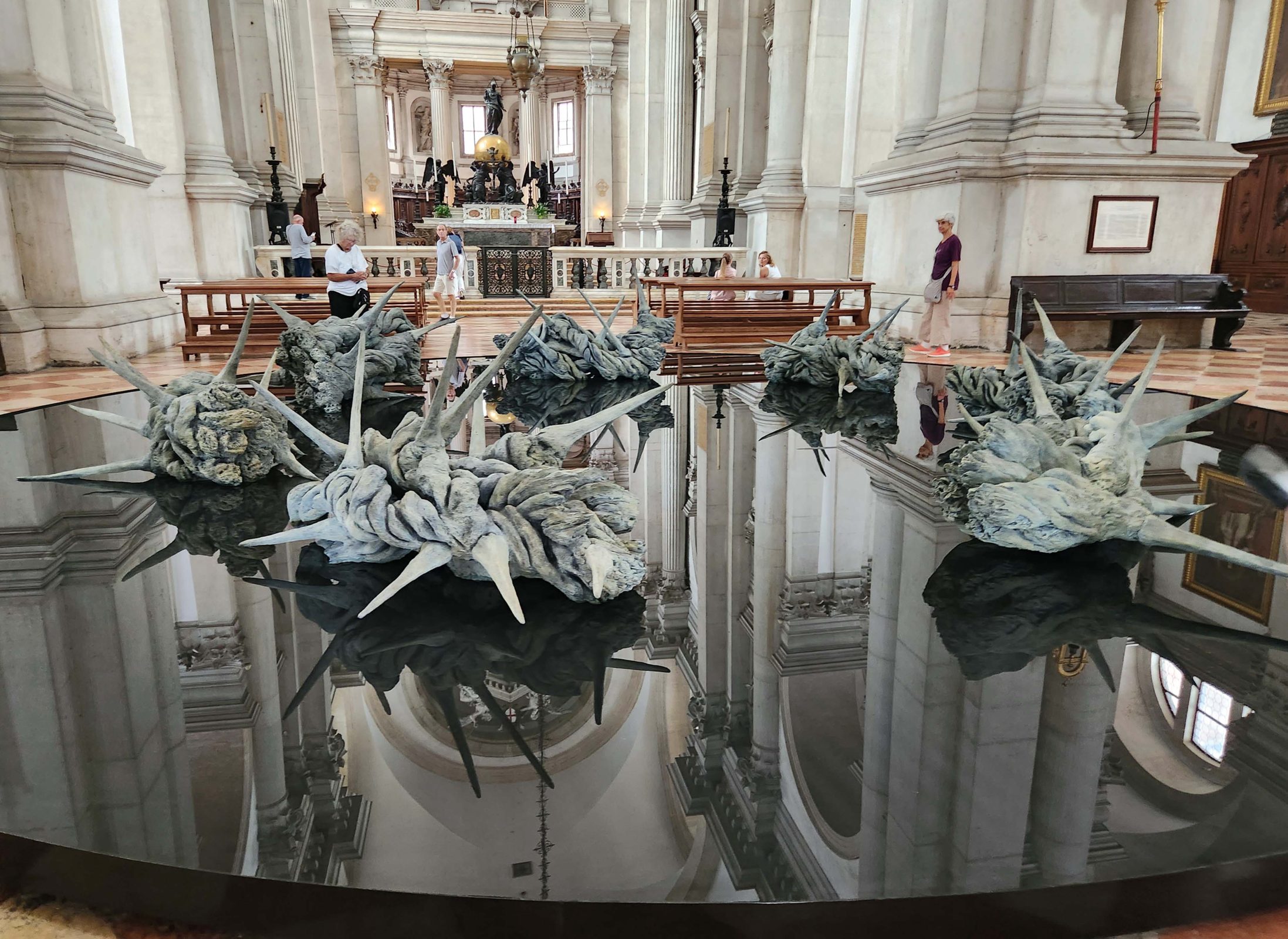As our water taxi took us through the Venetian Lagoon to San Giorgio Maggione Island today, we saw a boat delivering new sofas to Venice.
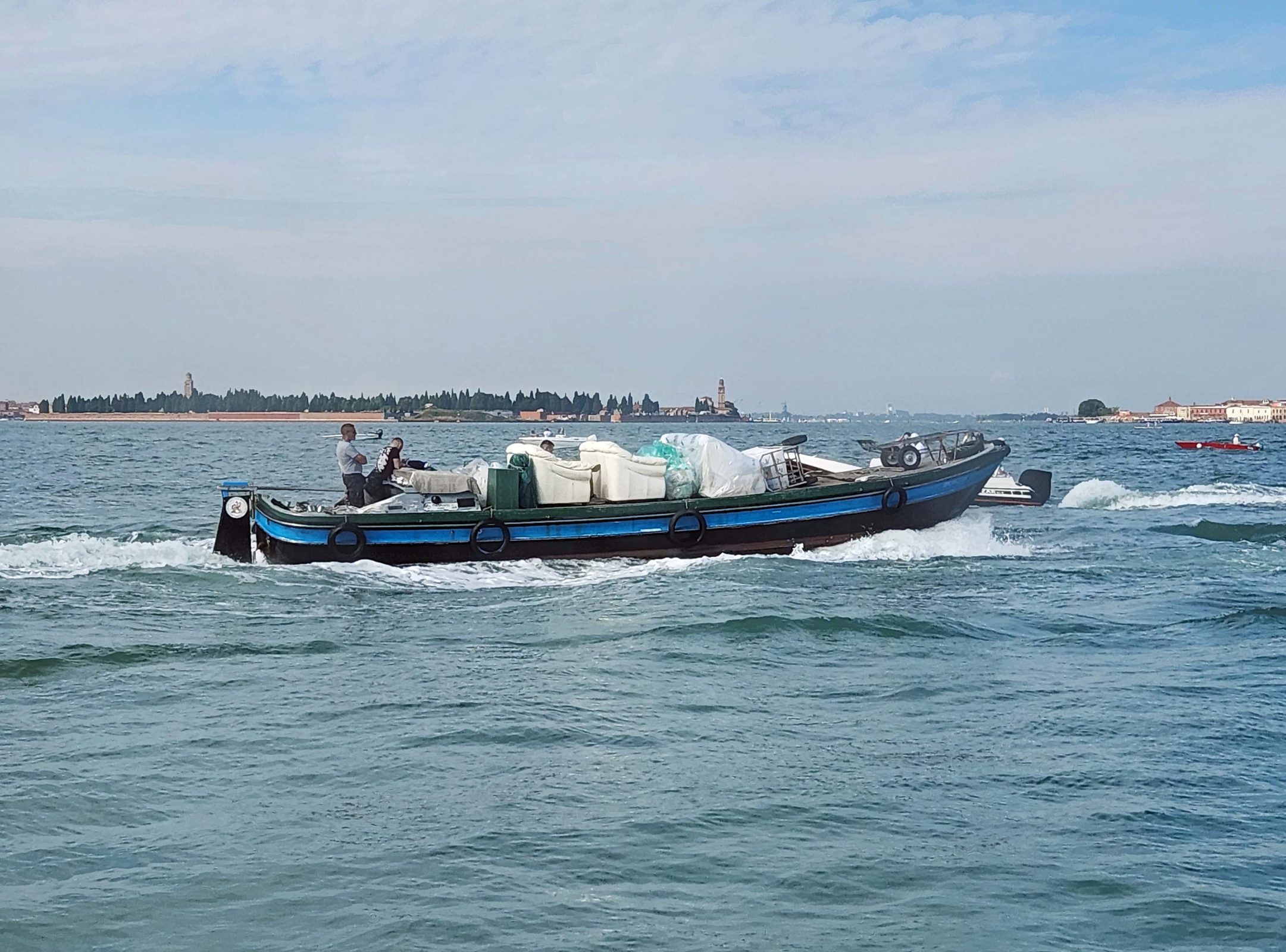
This sculpture is called “Building Bridges.” It features six pairs of hands, each pair different from the others, bridging the water as a symbol of the commonality humans share. Each pair of hands depicts one of humanity’s six universal values: Friendship, Faith, Help, Love, Hope, and Wisdom.

San Giorgio Maggiore (St. George Major) Island is very small and has a very large 16th century Benedictine church. The church is a counterpart of St. Mark’s and faces St. Mark’s Square across the basin in Venice. There wasn’t much room to take pictures of the church, so I pulled this one from the internet. In addition to the church, the island is the headquarters of an arts center and an open-air theater, and is also known for its library. The island and the church are popular subjects for painters and are featured in some of Monet’s paintings.
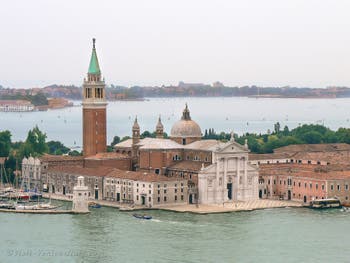
This is a closer view of the front of the church, which you can also see in the picture above.
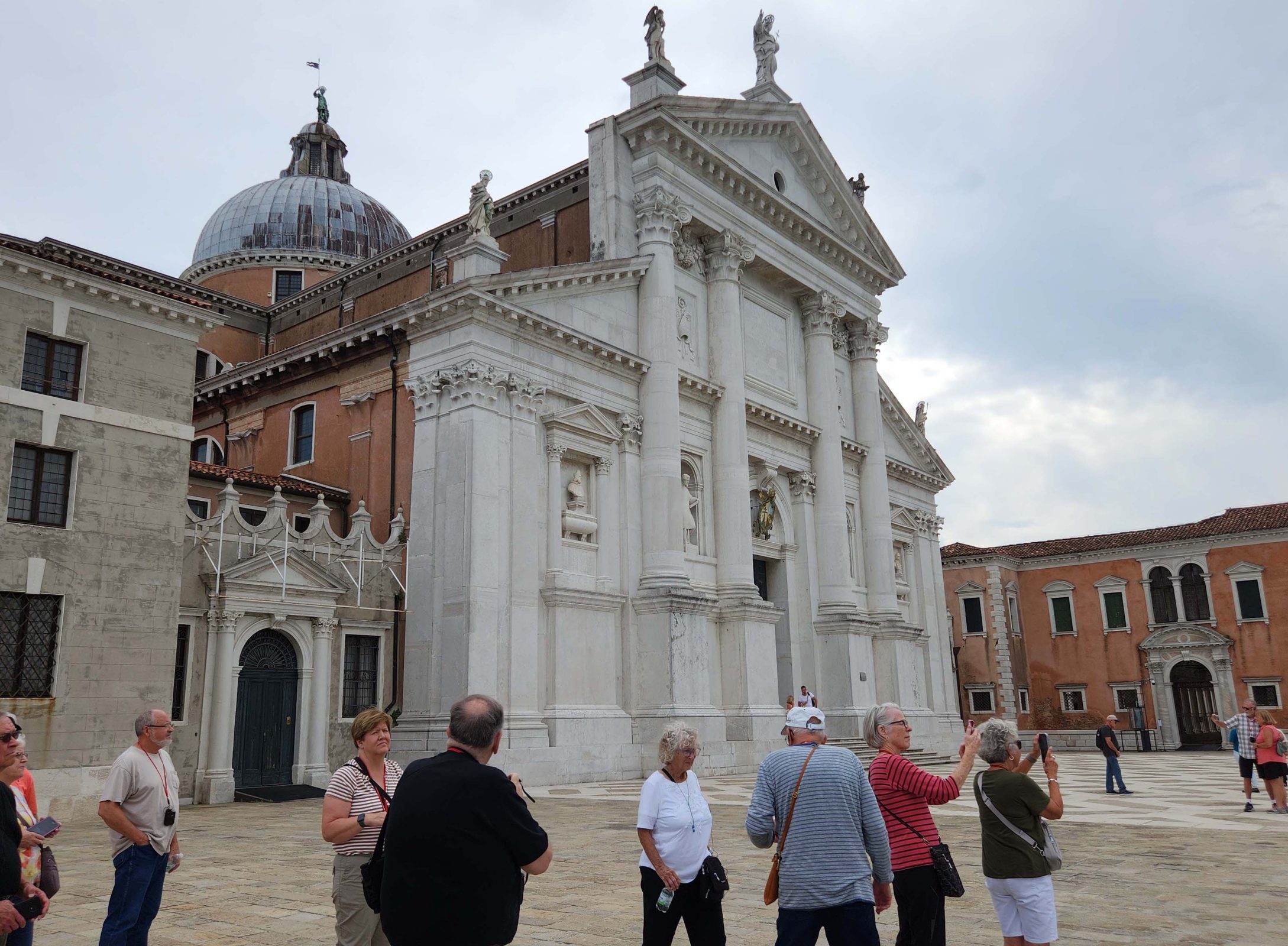
The interior of the church is very white and very bright. It features massive columns in the nave.
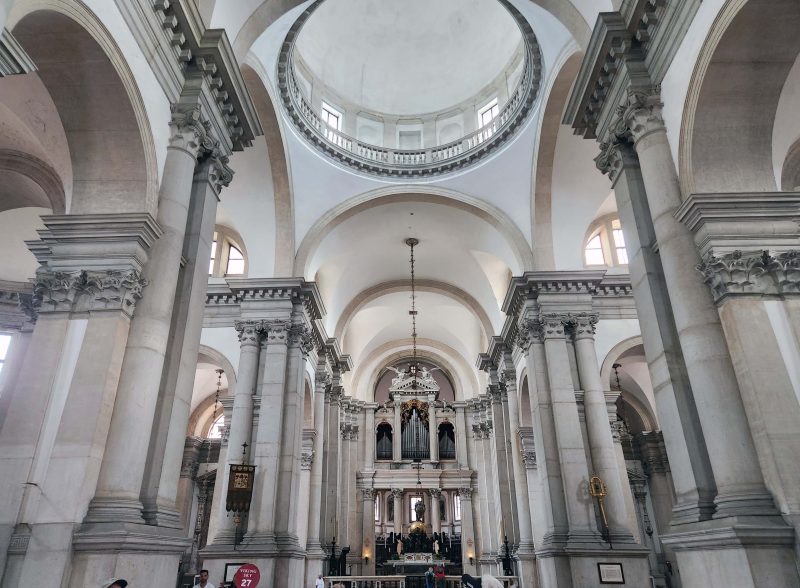
This is one of the small chapels within the church.
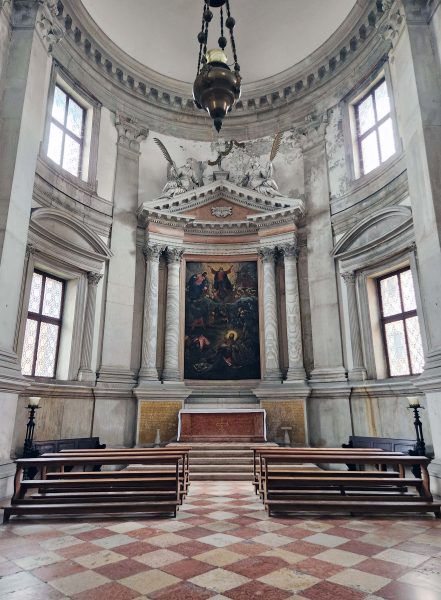
There are 48 choir stalls in this apse, and each one is carved with a scene from the life of St. Benedict.
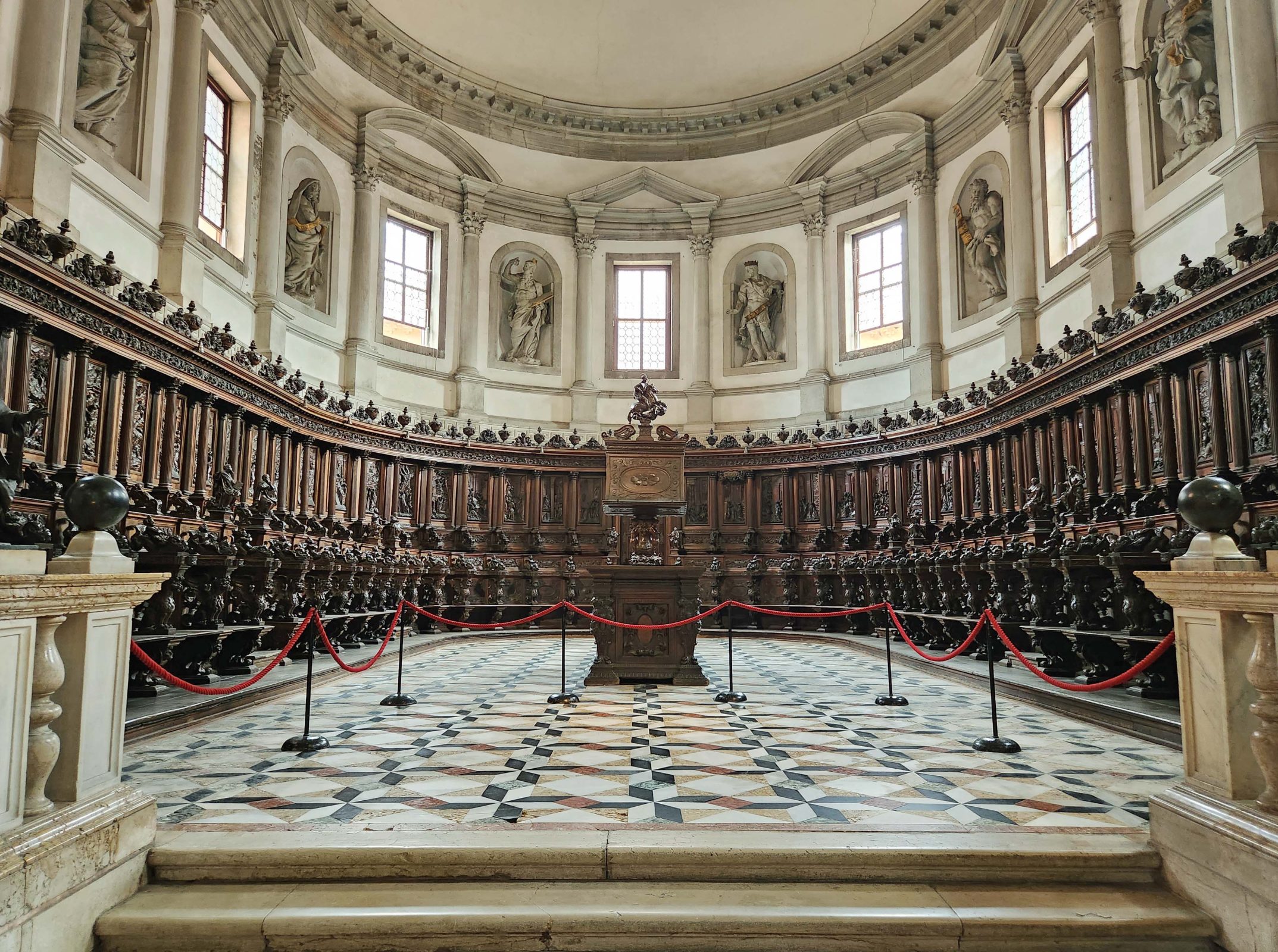
A statue similar to this one of St. George, made of wood and bronze, used to stand on top of the bell tower at the church. Lightning struck the statue during a wedding and the wood caught fire. It is unknown if that was a bad omen for the bride and the groom. Much later (many years?—also unknown), a man said he saw an angel, just like the one that was struck by lightning, hovering over the church. Could that be a good omen? Again, unknown. The hovering angel turned out to be a helicopter setting a replacement statue on the bell tower. There may be no deeper message here than “a statue was struck by lightning, burned, and was replaced,” but the omens and the hovering angel contribute to a nice little story.
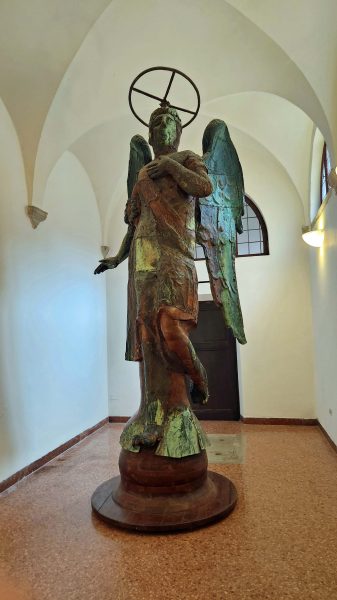
I don’t remember if this particular sarcophagus and/or statue is St. Stephen, but the church claims to have the relics of St. Stephen in its possession. Several other churches make a similar claim. If all the claims to St. Stephen’s relics are true, St. Stephen had 2 heads, 4 arms, and 3 legs. At one point, the Pope of the time said that the relics in these churches will work with prayer as long as the people who are praying believe they are the true relics.
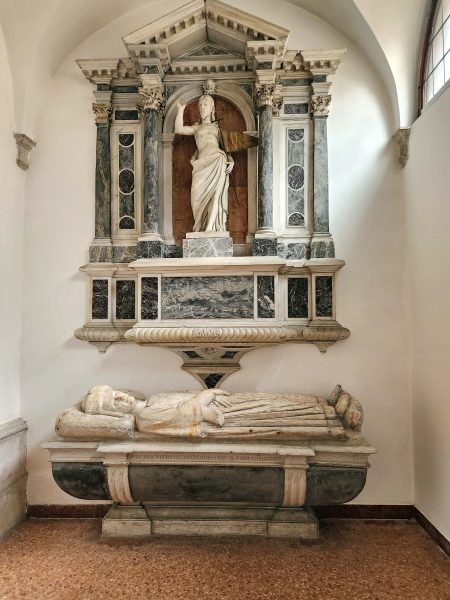
The church has two magnificent paintings by Jacopo Tintoretto: The Jews in the Desert and The Last Supper. I took photos of them, but they were so large (more than 12 by 18 feet) and hung so high, that my pictures weren’t very good. I found them online and was surprised to see that they are available for downloading if I provide the following credit:
By Jacopo Tintoretto-Web Gallery of Art: Image.
The paintings looked much brighter in person, and their size added to their impact. Both have dozens of symbolic representations. Simplified, The Jews in the Desert, painted in 1593, depicts the Israelites’ scorning of the manna, which led to setting up the bronze idol. The Israelites are washing their clothes at the foot of Mt. Sinai; Moses and Aaron are talking in the lower right corner.
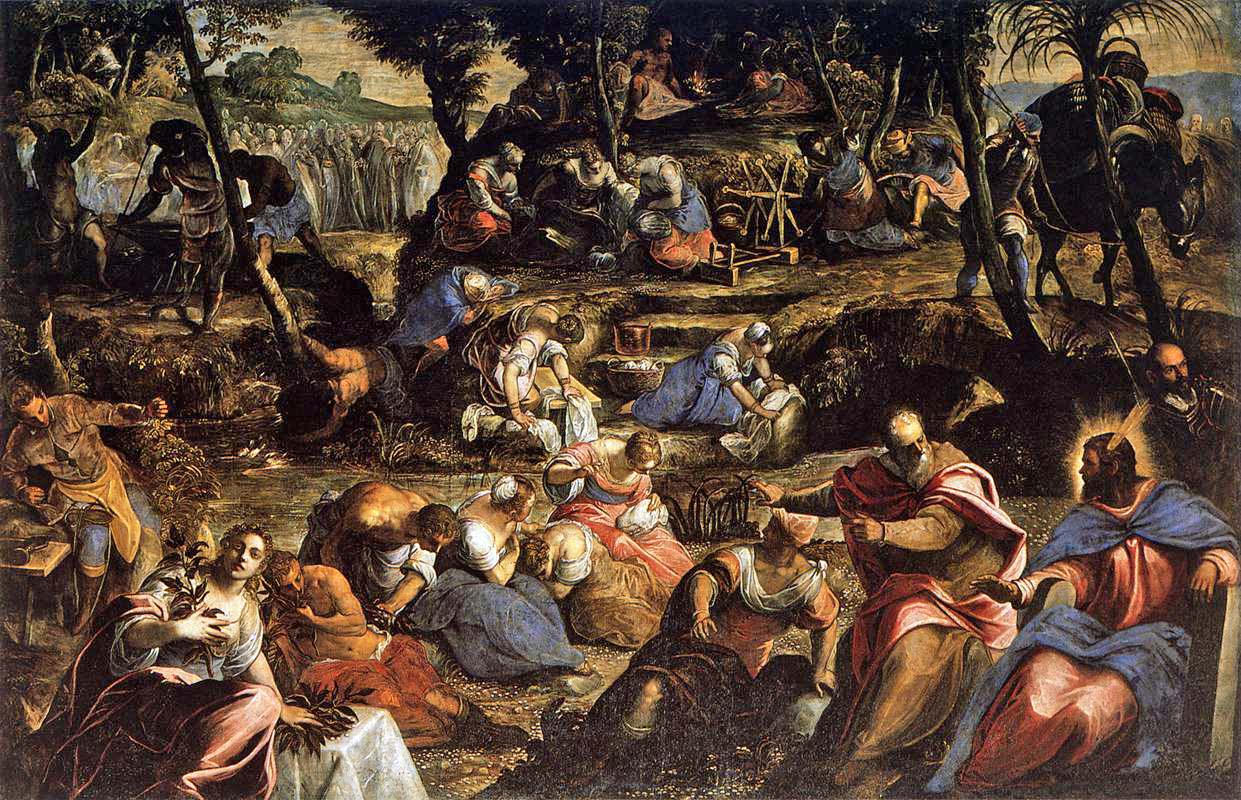
Again, simplifying the symbolism in the painting, The Last Supper, painted in 1594, shows winged apparitions that characterize the Eucharist (the bread of angels) and the mystery of transubstantiation (turning bread and wine into the body and blood of Christ). Jesus has a large halo; eleven of the disciples have smaller halos (Judas does not); and John, the beloved disciple, sits to the right of Christ. There are conflicting opinions about which figure is Judas.
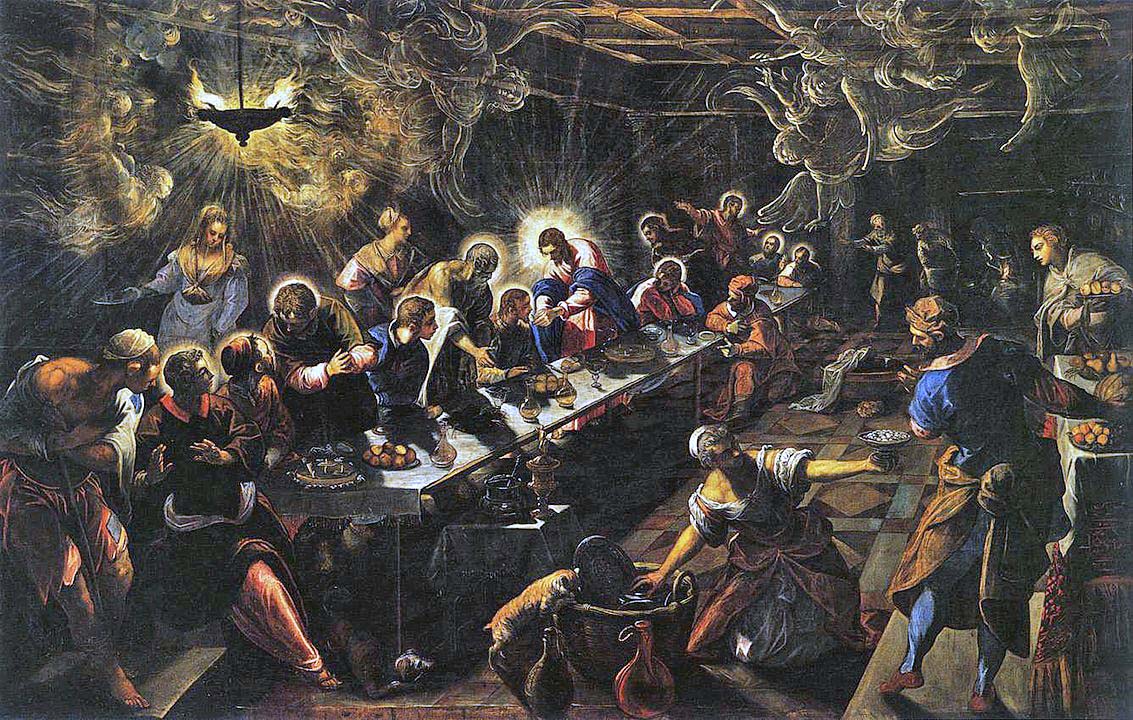
I was impressed and moved by Tintoretto’s paintings, but my favorite piece of art in the church was “Belonging,” a bronze installation with crowns of thorns in the center. It is positioned under the dome of the nave. Our entire group thought the base was a mirror because it so perfectly reflects its surroundings, but our guide told us she discovered it is water because, one time when she was conducting a tour, the installation had been drained. It looked so still and so solid that I was tempted to dip my finger into it for proof of its liquidity, but I knew it would take forever for the surface disturbance to disappear—and I’d probably be ejected from the building. That might have been a not-so-good travel story to tell.
